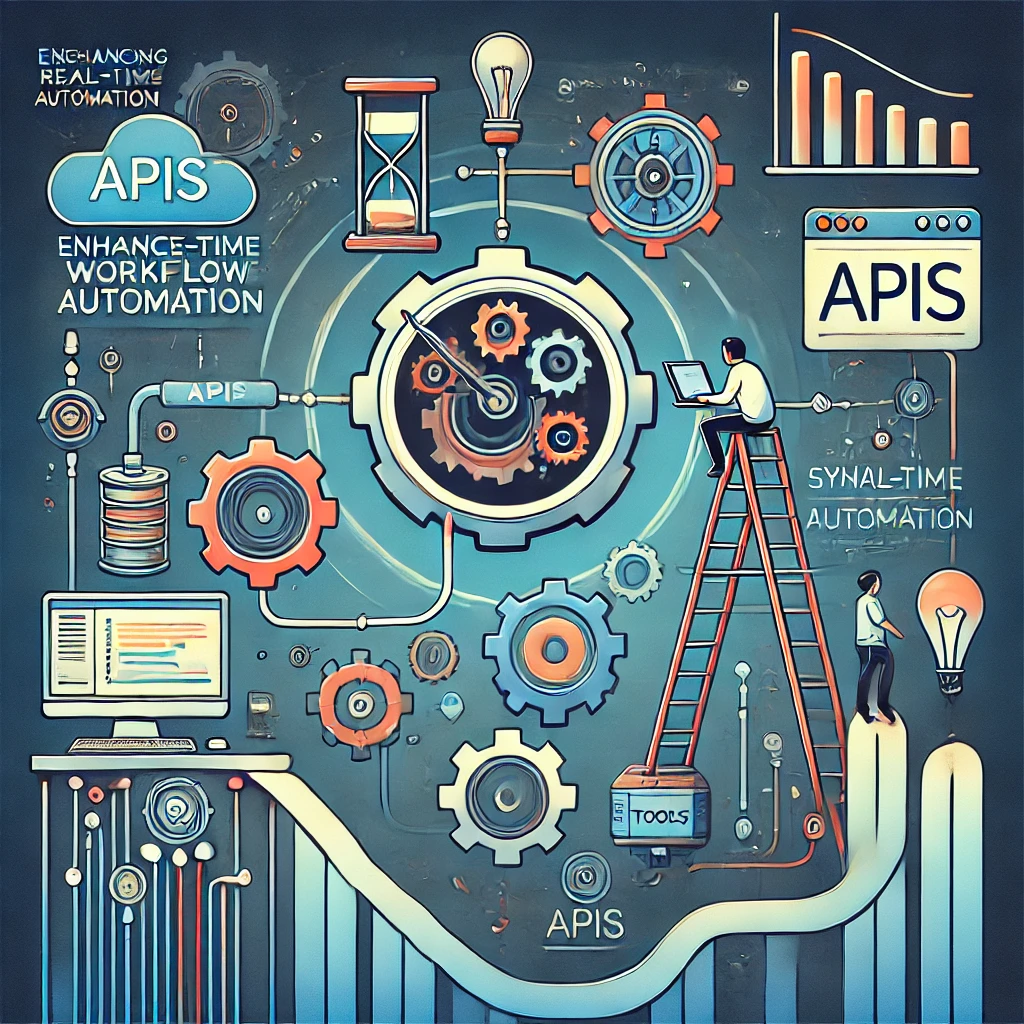Enhancing Real-Time Workflow Automation with Syncloop APIs

Syncloop provides advanced tools for real-time workflow automation, enabling businesses to build efficient and responsive APIs. With features like dynamic data mapping, low-latency processing, and real-time monitoring, Syncloop simplifies the development of automated workflows. This blog explores how Syncloop empowers real-time workflow automation and shares best practices for its implementation.
The Importance of Real-Time Workflow Automation
Real-time workflow automation drives value by:
- Streamlining Operations: Reducing manual intervention and increasing process efficiency.
- Enhancing Responsiveness: Triggering actions instantly in response to real-time events.
- Improving Accuracy: Minimizing errors by automating repetitive and complex tasks.
- Scalability: Handling growing business demands and complex workflows effortlessly.
- Delivering Better User Experiences: Providing faster and more reliable services.
Challenges in Real-Time Workflow Automation
- Low Latency Requirements Ensuring minimal delays in triggering and executing workflows.
- Integration Complexity Connecting diverse systems and APIs with varying formats and protocols.
- Scalability Supporting high volumes of real-time events and workflows.
- Error Handling Managing failures in real-time workflows without impacting downstream processes.
- Monitoring and Debugging Gaining visibility into workflow performance and identifying bottlenecks.
How Syncloop Enables Real-Time Workflow Automation
Syncloop provides a comprehensive platform to overcome these challenges:
- Dynamic Data Mapping Normalize and transform data to ensure compatibility across systems.
- Low-Latency Processing Handle high-throughput events with minimal delays.
- Workflow Orchestration Automate complex workflows involving multiple systems and APIs.
- Real-Time Monitoring Track workflow execution and identify issues proactively.
- Scalable Architecture Support large-scale workflows with dynamic resource allocation.
- Error Handling and Recovery Implement retry mechanisms and fallback actions for failed workflows.
- Custom Alerts Notify teams of anomalies or workflow disruptions in real time.
Steps to Implement Real-Time Workflow Automation with Syncloop
Step 1: Identify Automation Use Cases
Define the workflows that can benefit from real-time automation, such as:
- Processing customer orders instantly upon submission.
- Triggering notifications or alerts based on user actions.
- Synchronizing data across multiple systems in real time.
Step 2: Design Workflow APIs
Use Syncloop to design APIs that enable real-time automation, such as:
- /workflow/trigger: Starts a specific workflow based on an event.
- /workflow/status: Retrieves the current status of a workflow execution.
- /workflow/error: Logs errors and triggers fallback actions.
Step 3: Automate Workflow Execution
Leverage Syncloop’s workflow automation tools to:
- Define triggers based on real-time events or scheduled intervals.
- Sequence actions across systems and APIs.
- Use conditional logic to handle dynamic workflow requirements.
Step 4: Monitor Workflow Performance
Enable Syncloop’s monitoring tools to:
- Track latency, error rates, and throughput for workflows.
- Visualize workflow execution with real-time dashboards.
- Detect bottlenecks or failures and resolve them promptly.
Step 5: Optimize and Scale
Use insights from Syncloop to:
- Optimize workflow logic for better performance.
- Scale workflows dynamically to handle increased traffic or complexity.
- Refine error handling strategies based on observed issues.
Best Practices for Real-Time Workflow Automation
- Optimize for Low Latency Use efficient data pipelines and processing techniques to minimize delays.
- Enable Dynamic Scalability Design workflows that can scale horizontally with increasing demands.
- Implement Robust Error Handling Use retries, fallbacks, and notifications to manage workflow disruptions effectively.
- Monitor Continuously Track workflow metrics and address performance issues proactively.
- Document Workflow APIs Clearly Provide detailed documentation to ensure seamless integration and maintenance.
Example Use Case: Logistics and Delivery Management
A logistics platform uses Syncloop for real-time workflow automation:
- Order Processing: Triggers warehouse actions instantly when a new order is placed.
- Delivery Notifications: Sends updates to customers in real time as delivery status changes.
- Inventory Synchronization: Updates stock levels across multiple warehouses instantly.
- Error Handling: Implements fallbacks for delayed or failed deliveries.
- Monitoring: Tracks workflow performance to optimize operations during peak periods.
Benefits of Using Syncloop for Workflow Automation
- Improved Efficiency: Automate complex workflows and reduce manual intervention.
- Enhanced Performance: Handle real-time events with minimal latency.
- Scalable Solutions: Support growing business demands with a scalable architecture.
- Better User Experiences: Deliver faster and more reliable services to customers.
- Actionable Insights: Use analytics to refine workflows and optimize performance.
The Future of Workflow Automation
As businesses strive for greater efficiency and responsiveness, real-time workflow automation will become a cornerstone of modern operations. Syncloop equips developers with the tools to build, monitor, and optimize automated workflows, ensuring reliability and scalability in a fast-paced environment.
Image Description
A conceptual illustration showcasing Syncloop’s tools for real-time workflow automation, featuring dynamic workflows, real-time monitoring, and low-latency processing. The image highlights seamless integration and efficient automation for modern systems.
Back to Blogs